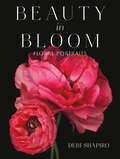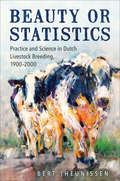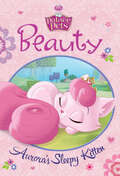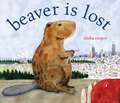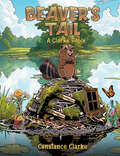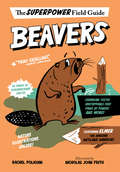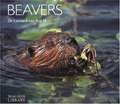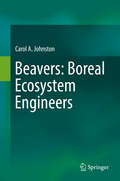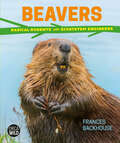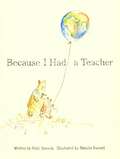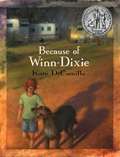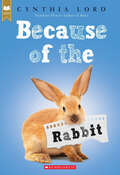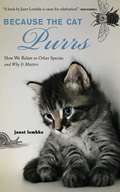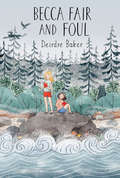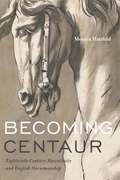- Table View
- List View
Beauty in Bloom: Floral Portraits
by Debi ShapiroA poppy bud captured moments before blossoming. A statuesque tuberose as if carved out of alabaster. A pair of delicate pink dahlias joined like two starfish floating in the sea.Beauty in Bloom is the debut collection of work by Debi Shapiro, a visual artist who creates beautiful imagery inspired by her two passions—flowers and photography. More than 200 floral portraits in this exquisite book capture the depth and luminosity of a single bloom to lush bouquets with breathtaking intimacy and vibrant energy. Every translucent petal, tender green stem, and grain of pollen shimmers with painterly detail reminiscent of the works of the great botanical artists and engravers of the eighteenth century. From the bold crimson beauty of an Oriental poppy to the seductive lure of a pink Protea peeking out from behind its thick foliage to the timeless classic beauty of a garden rose, it&’s a flower lover&’s dream. Debi&’s work truly makes every bloom a leading lady.
Beauty or Statistics: Practice and Science in Dutch Livestock Breeding, 1900–2000
by Bert TheunissenIn the 1970s, scientists claimed that farm animal breeding was finally evolving from an art into a science. In their view, the switch to scientific breeding was as inevitable as the ongoing process of agricultural modernization. However, the art-to-science scenario is too simplistic to do justice to the complex dynamic that characterized the transformation of the field. The livestock breeds that take centre stage in this book – dairy cattle, chickens, pigs, sheep, and horses – were products of the twentieth century. The methods used by breeders to improve their animals, however, were much older. Tracing the history of practical stockbreeding, the role of Mendelism in scientific breeding, and the emergence of quantitative genetics, Beauty or Statistics shows that the story of the scientific modernization of livestock breeding can be more fruitfully analyzed from the perspective of changing cultures of breeding, taking practical, commercial, normative, and aesthetic considerations into account.
Beauty's New Beak (Fountas & Pinnell LLI Red #Level M)
by Jacqueline AdamsWhen an eagle named Beauty lost her beak, volunteers wanted to make her a new one. Everyone told them it couldn't be done. Did Beauty's friends find a way to help her?
Beauty: Aurora's Sleepy Kitten (Disney Princess: Palace Pets)
by Disney Book GroupBeauty is a sweet kitty who loves to sleep, snuggle, and play with her best friend, Princess Aurora. Children ages 6 to 9 will love getting to know one of the Disney princesses' new Palace Pets in this book, one of a series of early chapter books that come with a collectible bookmark!
Beaver Alert! (Fountas & Pinnell Classroom, Guided Reading)
by Catherine FriendNIMAC-sourced textbook. TROUBLEMAKER OR SUPERHERO? Beavers are cute. They're hardworking. And they don't mean to cause any trouble.
Beaver Gets Lost (Little Animal Adventures)
by Ariane ChottinWhen Father and Mother Squirrel teach the lesson on nest building, only one family member pays attention. Then, he begins to build... and build...
Beaver Is Lost
by Elisha CooperOh, no—Beaver is lost! Will he ever find his way back home?In this nearly wordless picture book by Elisha Cooper, winner of a New York Times Best Illustrated Children's Book award, a young beaver is accidentally separated from his family. Follow Beaver as he's chased by a dog, visits a zoo, and even finds himself in the middle of a busy city street.In the vein of beloved classics like Flotsam and Good Night, Gorilla, this book is the perfect gift for future graphic novel enthusiasts. With luminous pencil-and-watercolor illustrations by an artist whose work the New York Times has called "simple and quiet and essentially perfect," Beaver Is Lost is sure to delight animal lovers everywhere.
Beaver Kits (Wild Baby Animals)
by Ruth OwenBeaver kits are born in a home built in a pond. A few weeks after birth, they begin to make small trips away from their home to learn how to find food. Luckily, the little beavers get a lot of help from their parents. Look inside to discover all the ways these wild baby animals get ready to become grown-up beavers.
Beaver's Tail: A Clarke Fable
by Constance ClarkeIn this creative Clarke Fable, a small beaver discovers his once beautiful pond has dried up and all that remains is trash. With the help of his forest friends, amazing things happen as the litter is put to good use. Life is restored to the pond and to those who depend on it. Be sure to watch for the monarch butterfly that appears on each page!
Beaverland: How One Weird Rodent Made America
by Leila PhilipAn intimate and revelatory dive into the world of the beaver—the wonderfully weird rodent that has surprisingly shaped American history and may save its ecological future. From award-winning writer Leila Philip, Beaverland is a masterful work of narrative science writing, a book that highlights, though history and contemporary storytelling, how this weird rodent plays an oversized role in American history and its future. She follows fur trappers who lead her through waist high water, fur traders and fur auctioneers, as well as wildlife managers, PETA activists, Native American environmental vigilantes, scientists, engineers, and the colorful group of activists known as beaver believers. Beginning with the early trans-Atlantic trade in North America, Leila Philip traces the beaver&’s profound influence on our nation&’s early economy and feverish western expansion, its first corporations and multi-millionaires. In her pursuit of this weird and wonderful animal, she introduces us to people whose lives are devoted to the beaver, including a Harvard scientist from the Blackfeet Reservation in Montana, who uses drones to create 3-dimensional images of beaver dams; and an environmental restoration consultant in the Chesapeake whose nickname is the &“beaver whisperer&”. What emerges is a poignant personal narrative, a startling portrait of the secretive world of the contemporary fur trade, and an engrossing ecological and historical investigation of these heroic animals who, once trapped to the point of extinction, have returned to the landscape as one of the greatest conservation stories of the 20th century. Beautifully written and impeccably researched, Beaverland reveals the profound ways in which one odd creature and the trade surrounding it has shaped history, culture, and our environment. The New York Times Editors' Choice NPR Science Friday Book Club Selection
Beavers (Nature's Children)
by Jolyon GoddardDescribes the physical features, habits and habitat of beavers, the world's great architects.
Beavers (Superpower Field Guide)
by Rachel Poliquin Nicholas John FrithBeavers, the first book in the new middle-grade nonfiction Superhero Field Guide series by Rachel Poliquin and award-winning illustrator Nicholas John Frith, is a delightfully informative, laugh-out-loud full-color look at the most unsuspecting of animal heroes, perfect for readers who like their facts served with a large dose of humor. Meet Elmer, an ordinary beaver. He may not be as mighty as a lion or as dangerous as a shark. He may be squat and brown. But never underestimate a beaver. I can almost hear you saying, “But aren’t beavers just lumpy rodents with buck teeth and funny flat tails?” Yes, they are! And believe it or not, those buck teeth and funny flat tails are just a few of the things that make beavers extraordinary. Humorous and engaging, Beavers is the first book in the new highly illustrated nonfiction Superpower Field Guide series, inspiring readers to laugh, think, and view the world around them with new eyes.
Beavers (Worldlife Library)
by Leonard Lee Rue IIIBeavers, written in the very readable style for which Dr. Leonard Lee Rue is well-known, presents an engaging look at the life of beavers around the world. Focusing mainly on the North American beaver, Dr. Rue introduces you to the beaver's way of life, one season at a time. You'll learn about the beaver's building projects (dams, lodges, burrows, channels, canals, and more), how they give birth and raise their young, and the relationship between beavers and humans.
Beavers and Other Rodents (World Book's Animals of the World)
by Meish GoldishIn a question and answer format Meish Goldish introduces beavers, their physical characteristics, habits, and habitat. Also discusses other rodents such as pocket gophers, kangaroo rats, rats, mice, lemmings, and woodchucks.
Beavers: Boreal Ecosystem Engineers
by Carol A. JohnstonBridging the fields of ecosystem science and landscape ecology, this book integrates Dr. Carol Johnston's research on beaver ecosystem alteration at Voyageurs National Park. The findings about the vegetation, soils, and chemistry of beaver impoundments synthesized in the text provide a cohesive reference useful to wetland scientists, ecosystems and landscape ecologysts, wildlife managers, and students. The beaver, Castor canadensis, is an ecosystem engineer unequaled in its capacity to alter landscapes through browsing and dam building, whose population recovery has re-established environmental conditions that probably existed for millenia prior to its near extirpation by trapping in the 1800s and 1900s. Beavers continue to regain much of their natural range throughout North America, changing stream and forest ecosystems in ways that may be lauded or vilified. Interest in beavers by ecologists remains keen as new evidence emerges about the ecological, hydrological, and biogeochemical effects of beaver browsing and construction. There is a critical need for ecologists and land managers to understand the potential magnitude, persistence, and ecosystem services of beaver landscape transformation. The 88-year record of beaver landscape occupation and alteration documented by Dr. Carol Johnston and colleagues from aerial photography and field work provides a unique resource toward understanding the ecosystem effects and sustainability of beaver activity.
Beavers: Radical Rodents and Ecosystem Engineers (Orca Wild #6)
by Frances BackhouseBy cutting trees and building dams, beavers shape landscapes and provide valuable wetland homes for many plants and animals. These radical rodents were once almost hunted to extinction for their prized fur, but today we are building a new relationship with them, and our appreciation of the benefits they offer as habitat creators and water stewards is growing. Packed with facts and personal stories, this book looks at the beaver’s biology and behavior and illuminates its vital role as a keystone species. The beaver’s comeback is one of North America’s greatest conservation success stories and Beavers: Radical Rodents and Ecosystem Engineers introduces readers to the conservationists, scientists and young people who are working to build a better future for our furry friends.
Bebés de todo tipo (¡Arriba la Lectura! Level B #33)
by Linda WashingtonNIMAC-sourced textbook <p><p> Los animales también tienen bebés. En este libro, verás algunas mamás con sus bebés.
Because I Had a Teacher
by Kobi YamadaWe all remember our favorite teacher. Where would we be without them those special people who inspire us, support us, and encourage us? Whether they're an educator, a coach, or a mentor, this book is for them. To celebrate the worlds they open up for us and to thank them for the difference they make. This heartwarming book is a thank you gift for great teachers everywhere. Perfect for National Teacher Day, Teacher Appreciation Week, the end of the school year, or just because.
Because Your Grandparents Love You
by Andrew Clements R. W. AlleyAs every child knows, grandparents are special. Why? Because they love their grandchildren in their own unique way. Although the boy and girl in this story often make mistakes, their grandparents never lose patience, but help their grandchildren and cheer when they get things right. Lyrical, soothing words are paired with warm and humorous pictures in this tribute to the unconditional love every grandparent and grandchild share.
Because of Winn-Dixie
by Kate DiCamilloRecalling the fiction of Harper Lee and Carson McCullers, here is a funny, poignant, and utterly genuine first novel from a major new talent.<P><P> The summer Opal and her father, the preacher, move to Naomi, Florida, Opal goes into the Winn-Dixie supermarket--and comes out with a dog. A big, ugly, suffering dog with a sterling sense of humor. A dog she dubs Winn-Dixie. Because of Winn-Dixie, the preacher tells Opal ten things about her absent mother, one for each year Opal has been alive. Winn-Dixie is better at making friends than anyone Opal has ever known, and together they meet the local librarian, Miss Franny Block, who once fought off a bear with a copy of WAR AND PEACE. They meet Gloria Dump, who is nearly blind but sees with her heart, and Otis, an ex-con who sets the animals in his pet shop loose after hours, then lulls them with his guitar.Opal spends all that sweet summer collecting stories about her new friends and thinking about her mother. But because of Winn-Dixie or perhaps because she has grown, Opal learns to let go, just a little, and that friendship--and forgiveness--can sneak up on you like a sudden summer storm.<P> Newbery Medal Honor book
Because of the Rabbit (Scholastic Press Novels Ser.)
by Cynthia LordOn the last night of summer, Emma tags along with her game warden father on a routine call. They're supposed to rescue a wild rabbit from a picket fence, but instead they find a little bunny. Emma convinces her father to bring him home for the night.The next day, Emma starts public school for the very first time after years of being homeschooled. More than anything, Emma wants to make a best friend in school. But things don't go as planned. On the first day of school, she's paired with a boy named Jack for a project. He can't stay on topic, he speaks out of turn, and he's obsessed with animals. Jack doesn't fit in, and Emma's worried he'll make her stand out.Emma and Jack bond over her rescue rabbit. But will their new friendship keep Emma from finding the new best friend she's meant to have? Newbery Honor-winning author Cynthia Lord has written a beautiful and sensitive book about being different and staying true to yourself.
Because the Cat Purrs: How We Relate to Other Species and Why it Matters
by Janet Lembke"A new book by Janet Lembke is always a cause for celebration."-Sue Hubbell We share our lives, for better or worse, with a multitude of animals, white-tailed deer and white-tailed eagles, hens and wrens, frogs and guppies, and, last but hardly least, bugs and bacteria. For the most part, we drift along separately, with neither man nor animal affecting the other's way of life. Sometimes, however, we fall in love-as in the case of the cat in the title-or otherwise encounter our animal neighbors in ways that change both of us. Lembke challenges her readers to consider the idea that all creatures are conscious, with the ability to make choices, exercise awareness, and seek pleasure while shunning pain. Rarely has a book of natural history covered such a broad range of subjects, from the everyday bargains we make with our pets and other domestic creatures to descriptions of bungee-cord snail sex and the purpose of a honeybee's sting. Lembke explores the evolution of her subjects, and draws on literature and myth to paint gorgeous, wide-ranging portraits of everyday (and more unusual) encounters, such as that of a gardener and a groundhog, or a chicken egg and Augustus Caesar's wife. This is a sensitive and timely appraisal of how we treat the creatures we share our planet with-and how we ought to. It is a book that no lover of intelligent writing about the natural world will want to miss. 20 b/w illustrations.
Becca Fair and Foul
by Deirdre BakerA summer on an idyllic island surrounded by water and wildlife. What could possibly go wrong?When eleven-year-old Becca returns to her grandmother’s rustic cottage for another summer, she finds herself seeing her beloved island in new ways. A hunting owl mistakes a bobbing ponytail for prey. A cozy sleepover on the beach takes on the tinges of a nightmare when a family of river otters shows up to claim their territory. An argument between a nestbound baby eaglet and its haranguing mother reaches operatic dimensions. Becca finds a dead bear on the beach and helps to give it a burial at sea.Then there are dramas of the human variety. Aunt Meg is grieving over a miscarriage, and Aunt Clare’s medical work in Africa has brought on a sadness that even the love of family and the island’s beauty can’t cure. And there is the burning question of whether Aunt Fifi and the local plumber will ever become an item, and would that mean losing the only plumber on the island?Meanwhile, cousin Alicia claims to be too old to participate in the kids’ summer project — a performance of The Tempest, a play that seems to find unsettling echoes in the natural surroundings Becca thought she knew so well.Correlates to the Common Core State Standards in English Language Arts:CCSS.ELA-LITERACY.RL.4.2Determine a theme of a story, drama, or poem from details in the text; summarize the text.CCSS.ELA-LITERACY.RL.5.2Determine a theme of a story, drama, or poem from details in the text, including how characters in a story or drama respond to challenges or how the speaker in a poem reflects upon a topic; summarize the text.CCSS.ELA-LITERACY.RL.6.3Describe how a particular story's or drama's plot unfolds in a series of episodes as well as how the characters respond or change as the plot moves toward a resolution.
Becoming Centaur: Eighteenth-Century Masculinity and English Horsemanship (Animalibus)
by Monica MattfeldIn this study of the relationship between men and their horses in seventeenth- and eighteenth-century England, Monica Mattfeld explores the experience of horsemanship and how it defined one’s gendered and political positions within society.Men of the period used horses to transform themselves, via the image of the centaur, into something other—something powerful, awe-inspiring, and mythical. Focusing on the manuals, memoirs, satires, images, and ephemera produced by some of the period’s most influential equestrians, Mattfeld examines how the concepts and practices of horse husbandry evolved in relation to social, cultural, and political life. She looks closely at the role of horses in the world of Thomas Hobbes and William Cavendish; the changes in human social behavior and horse handling ushered in by elite riding houses such as Angelo’s Academy and Mr. Carter’s; and the public perception of equestrian endeavors, from performances at places such as Astley’s Amphitheatre to the satire of Henry William Bunbury. Throughout, Mattfeld shows how horses aided the performance of idealized masculinity among communities of riders, in turn influencing how men were perceived in regard to status, reputation, and gender.Drawing on human-animal studies, gender studies, and historical studies, Becoming Centaur offers a new account of masculinity that reaches beyond anthropocentrism to consider the role of animals in shaping man.
